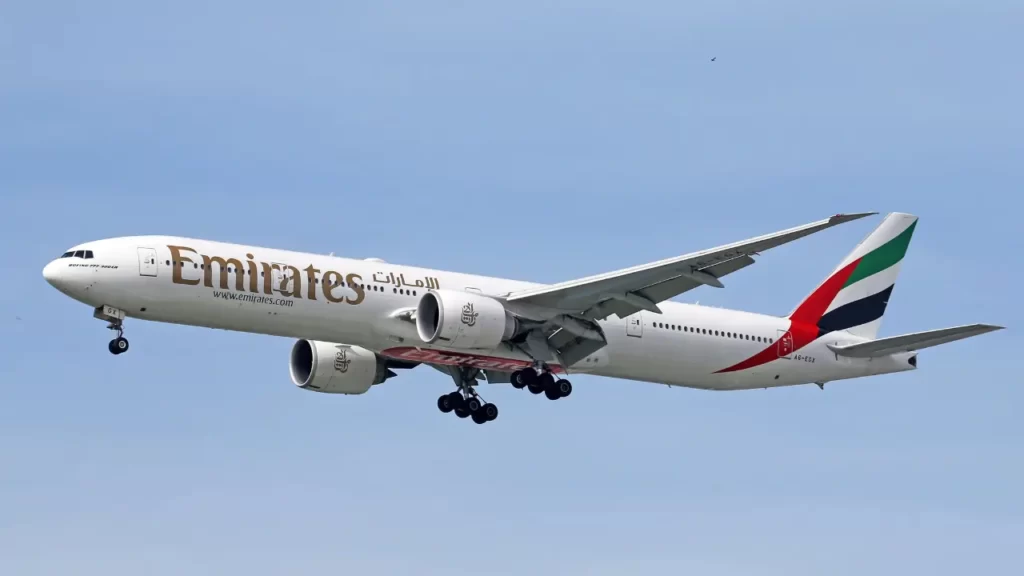
Emirates Airlines Overview
Emirates Airlines is the main airline in the Middle East and one of the most prominent carriers in the world. Known for its luxurious facilities and modern fleet, Emirates has played a significant role in establishing Dubai as a global flying hub. Here is an overview of Emirates Airlines.
Table of Contents
Establishment and Hub
- Emirates Airlines was founded in 1985 and is based in Dubai, United Arab Emirates (UAE).
- Dubai International Airport serves as the primary hub for Emirates.
Ownership and Leadership
- Emirates is owned by the government of Dubai and is part of The Emirates Group. Sheikh Ahmed bin Saeed Al Maktoum has been the chairman and chief decision-making of Emirates since its inception.
Fleet
- Emirates operates one of the main and most modern fleets in the world. The fleet comprises a mix of wide-body aircraft, mainly from Airbus (A380, A350, A330) and Boeing (777).
Global Network
- Emirates has an extensive global network, connecting passengers to over 150 destinations in more than 80 countries across six continents. The airline is known for its emphasis on long-haul flights.
Cabin Classes
- Emirates offers various cabin classes, including Economy Class, Business Class, and First Class. The airline is particularly renowned for its luxurious First Class cabins, featuring private suites and onboard showers on some aircraft.
In-Flight Entertainment and Connectivity
- Emirates is known for its award-winning in-flight entertaining system, ICE (Information, Communication, and Entertainment). Passengers can like a wide range of movies, TV shows, music, and games. Some aircraft also offer in-flight Wi-Fi.
Awards and Recognitions
- Emirates has received numerous prizes for its excellence in the aviation industry. The airline has been recognized for its in-flight services, client satisfaction, and overall quality.
Airbus A380 Operations
- Emirates is the largest worker of the Airbus A380, the world’s largest passenger aircraft. The airline has played a vital role in popularizing the A380 for long-haul travel.
Emirates Skywards Loyalty Program
- Emirates operates a frequent-flyer program called Emirates Skywards, allowing members to earn and redeem miles for flights, upgrades, and other benefits.
Dubai International Airport and Concourse
- Emirates has contributed significantly to the development and success of Dubai International Airport. The airline operates from Concourse A, a dedicated facility at the airport for its A380 flights.
Environmental Initiatives
- Emirates has expressed a commitment to environmental sustainability and has invested in fuel-efficient aircraft to reduce its carbon footprint. The airline has also explored biofuel initiatives.
COVID-19 Pandemic Response
Like other airlines, Emirates faced challenges during the COVID-19 pandemic. The airline implemented safety measures, adjusted its schedule, and introduced innovative initiatives to ensure passenger well-being.
Emirates Airlines is widely recognized for its opulent services, commitment to innovation, and its role in transforming Dubai into a major global aviation hub. Keep in mind that developments may have occurred since my last update.
Emirates Airlines History

The history of Emirates Airlines is noticeable by rapid growth, innovation, and transformation of Dubai into a major international aviation center. Here is an overview of key milestones in the history of Emirates Airlines.
Founding and Inaugural Flight (1985)
- Emirates Airlines was established on March 25, 1985, with support from the administration of Dubai. It was hurled with a vision to establish Dubai as a global hub for air travel.
- The airline’s inaugural flight took place on October 25, 1985, with a leased Boeing 737-300 flying from Dubai to Karachi.
Rapid Expansion (1980s-1990s)
- In the early years, Emirates absorbed on expanding its network, primarily in the Middle East and Asia. The airline gradually added more terminuses to its route map.
Introduction of Wide-Body Aircraft (1990s)
- Emirates made a significant change in the 1990s by introducing wide-body airplanes, such as the Airbus A300 and Boeing 777, to its fleet. This allowed for long-haul flights and increased passenger capacity.
Dubai’s Growth as a Hub (1990s-2000s)
- As Emirates expanded its operations, Dubai International Airport underwent significant development. The airport’s infrastructure was upgraded to accommodate the growing airline and passenger traffic.
Launch of Emirates SkyCargo (1986)
- In 1986, Emirates launched its cargo division, Emirates SkyCargo, providing air freight services to various destinations worldwide.
Introduction of the Airbus A380 (2008)
- Emirates made aviation history by becoming the largest worker of the Airbus A380. The airline placed a substantial order for this double-deck, wide-body aircraft, which allowed for increased capacity on high-demand routes.
In-Flight Innovations
- Emirates gained a reputation for its in-flight innovations and luxurious services. This includes the introduction of private suites in First Class, onboard showers for premium passengers, and the award-winning ICE (Information, Communication, and Entertainment) in-flight entertainment system.
Global Expansion (2000s-2010s)
- Emirates continued to expand its global system, reaching destinations across Europe, the Americas, Africa, and Oceania. The airline became known for operating long-haul flights and connecting travelers on a global scale.
Dubai World Central and Concourse A (2010s)
- With the opening of Dubai World Central, also known as Al Maktoum International Airport, Emirates further expanded its operations. The airline also introduced Concourse A at Dubai International Airport, a dedicated facility for A380 flights.
Emirates Skywards Loyalty Program (2000)
- Emirates launched its frequent-flyer program, Emirates Skywards, allowing passengers to earn and redeem miles for flights, upgrades, and various benefits.
Environmental Initiatives
- Emirates expressed a commitment to environmental sustainability. The airline has invested in fuel-efficient aircraft and explored initiatives to reduce its carbon footprint. Additionally, Emirates has been involved in biofuel research.
COVID-19 Pandemic Response (2020s)
Like other airlines, Emirates faced challenges during the COVID-19 pandemic. The airline implemented safety measures, adjusted its flight schedules, and explored new ways to ensure passenger and staff safety.
Emirates Airlines has played a crucial role in altering Dubai into a major aviation center and has develop one of the world’s leading carriers known for its quality service and modern fleet. Please note that developments may have occurred since my last update.
